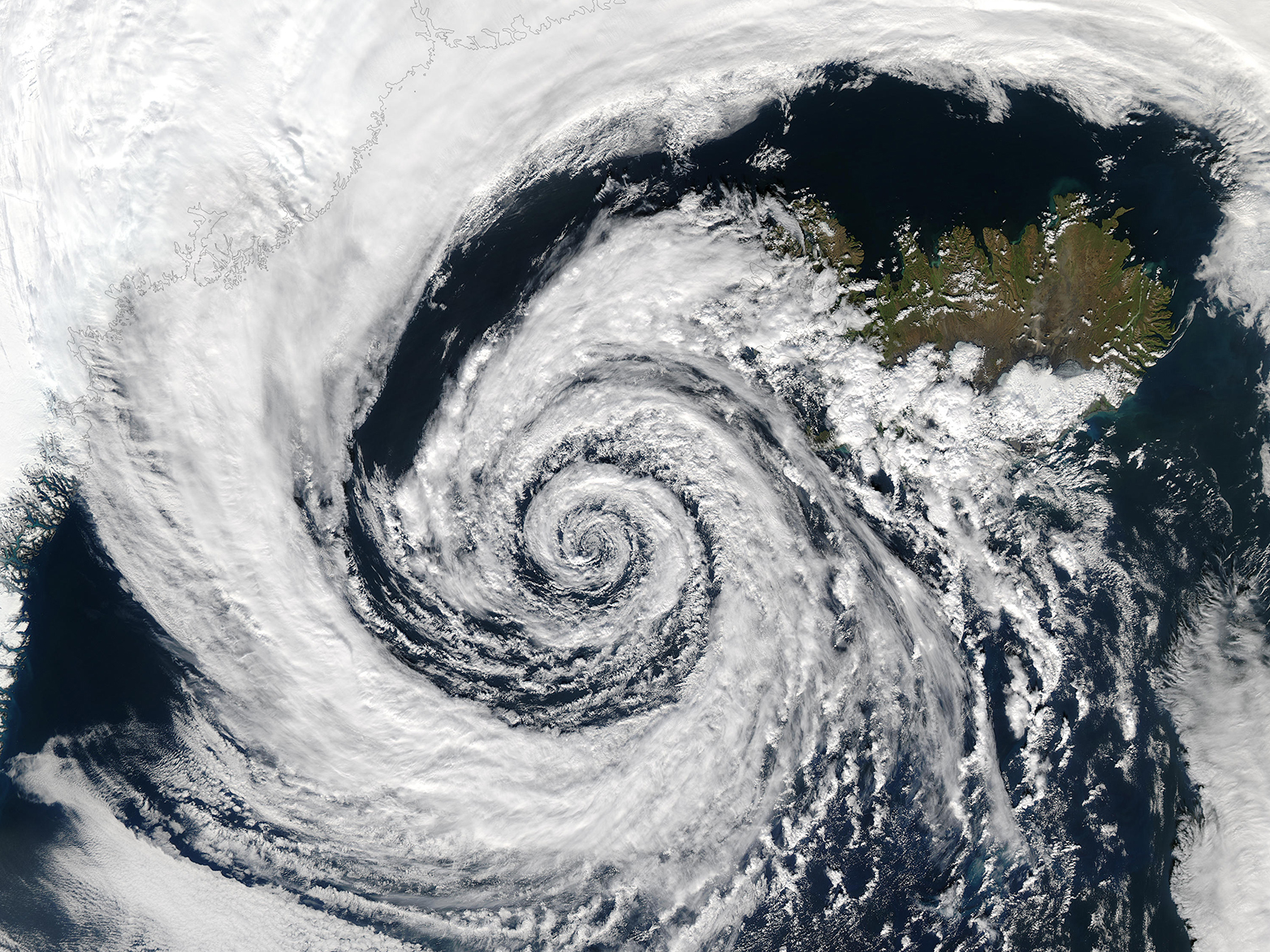Why do we need sharper weather and climate models?
We know that CO2 is warming the planet. But if we want to understand its consequences and avert risks, more accurate weather and climate models are crucial, says Nicolas Gruber.

Models are crucial for the weather and climate sciences. Without the current models, reliable weather forecasts beyond tomorrow would be almost impossible, and we would have only a vague idea of what global warming has in store for us.
In the recently started EXCLAIM research project1, we want to build on this achievement and develop the next generation of weather and climate models. The new models will provide a much higher resolution of the key processes in the atmosphere and oceans. Working within the Center for Climate Systems Modeling (C2SM), the research team will create the model and data infrastructure that will allow us to simulate storms, thunderstorms, and clouds on a global scale. This will lead to more reliable weather forecasts and more precise climate projections.
Are we betting on the right horse?
Of course, this also raises questions. Don’t we know already enough about climate change? What’s the point of making the weather forecast just that little bit better? Is it worth the enormous effort?
Indeed, we know already with high certainty that humans are responsible for most of the warming we observe. We understand the relationship between CO2 emissions and temperature relatively accurately, and we have recognized that we need to reduce CO2 emissions to net zero within the next few decades to meet the Paris climate targets. Our understanding of these issues is already sufficient for deriving clear policy recommendations.
However, there are many other aspects of climate change that we don’t know well. For example, we have a poor understanding of how weather and storm systems will develop in the future, whether tropical cyclones will become more frequent, and how clouds and precipitation will change. These limitations have much to do with the fact that today’s climate models, to put it bluntly, are simply too fuzzy in many respects; they just don’t adequately resolve these phenomena and processes.
Shedding light on fundamental processes
Climate models place a grid over the Earth or ocean and calculate the state of the atmosphere for each cell; this helps us to understand and predict weather and climate better. The smaller the grid cell, the higher the resolution. Current global climate models typically have grid cells with a width of about 100 km.2
As a result, these models don’t resolve key processes in the atmosphere or ocean, particularly processes that occur on a scale of just a few kilometres such as clouds and storms. This forces us to estimate the influence of these processes indirectly, using parameterisations. This leads to uncertainty in predictions, as clouds and storms determine not only our daily weather but are also crucial for climate.
“More reliable weather forecasts and more accurate climate simulations will help us to reduce risks to society and its infrastructure.”Nicolas Gruber
If we want to quantify more exactly how much precipitation will fall someday, and how clouds will affect climate change, then we need to simulate the dynamics of these processes according to the laws of physics, rather than to parameterise them. We expect that we can break through this parameterization wall with the high-resolution models we will develop in the EXCLAIM project.
Sharpen the view
Due to their higher resolution, such models will sharpen our view of the future. This will help us in two ways: First, we will be able to determine more accurately the meteorological averages for the future. This will improve our climate projections. And second, we will gain more reliable information about the future variation around that mean, i.e., we will improve the weather of the future. As the mid-July storms and floods have reminded us, it is the changing weather, and particularly its extremes, that will challenge us most as climate keeps warming.
In this way, more reliable weather forecasts and more accurate climate simulations will help to reduce risks to society and its infrastructure. The better we understand the climate impacts, the better we can adapt to them. There is little doubt that next to the reduction in emissions, we will have to adapt to a changing climate. Even if we achieve the 2-degree target, countries like Switzerland will continue to warm significantly: by the end of the century, it’s likely to be more than 3 degrees Celsius warmer here than in pre-industrial times.
Huge benefit for society
Our project doesn’t operate in a vacuum: we’re developing our models, and particularly their concrete applications, in close cooperation with our project partners. One example are the Swiss climate scenarios that ETH Zurich and MeteoSwiss regularly create under the aegis of C2SM.3 EXCLAIM will develop a high-resolution model configuration for the Alpine region to simulate extreme events such as heavy precipitation, droughts and heat waves with greater certainty in the future. This means that these scenarios can ensure that resources for adaptation measures are optimally deployed.
Of course, even our new models will hit their limits. But by better resolving many fundamental processes, we can validate these models better with observations and consequently refine them in a continuous process. This will benefit not just research, but also society. Which is why I’m convinced that our endeavour is worthwhile.

References
1 The EXCLAIM website
2 World Climate Research Programme: external page CMIP Phase 6
3 Swiss climate scenarios: external page CH2018
Related articles
New, high-resolution models merge weather and climate (ETH News, 06.08.2021)
Why we need new climate models (ETH News, 21.08.2019)
Climate Scenarios CH2018: the warming continues (ETH News, 13.11.2018)
Computing for Climate (part 1): Evolution of Models (Zukunftsblog, 20.10.2015)
Computing for Climate (part 2): How Modern Climate Models Work (Zukunftsblog, 22.10.2015)